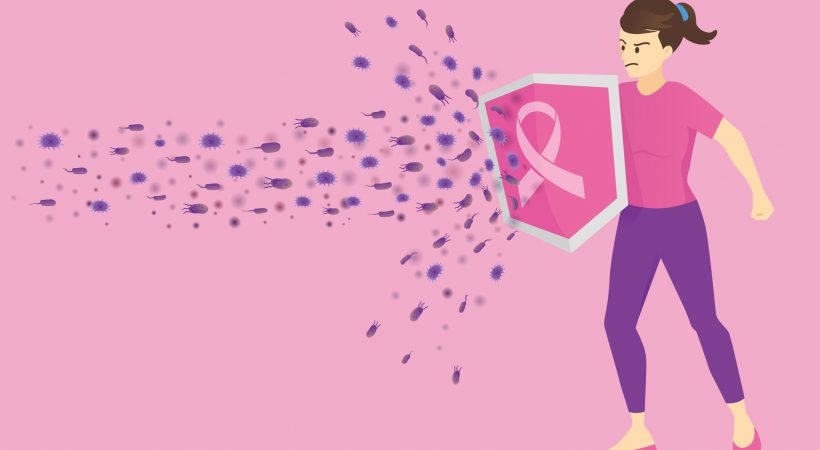Signs and Symptoms
Early stages of breast cancer don’t manifest any signs or symptoms at all. Different people have also experienced different symptoms, but there are some warning signs of breast cancer that we have to be on the lookout to:
Lump
Not all lumps or swelling in the breast is cancerous. Although it is important to have any breast mass to be checked by an experienced health care professional.
Breast or nipple pain
Although occasional breast pain is normal and can be affected by a woman’s menstrual cycle, consistent breast pain that is localized in one area needs to be examined by a doctor.
Nipple retraction
An inverted or retracted nipple can be caused by numerous conditions, not just cancer. However, if retracted nipple causes pain and irritation and if any swelling, redness, and thickening of the skin is experienced, further examinations need to be done. If cancer is suspected, a needle biopsy will be recommended by the doctor.
Other signs and symptoms include:
– dimpling of the breast tissue which is similar to an orange surface
– a red, scaly rash around on the skin or on one of the nipples
– other fluid or blood fluid discharge from the nipple
– change in the appearance or size of the breasts
Treatments
Unlike a lot of medical conditions that can be improved through natural methods, high quality mattresses, and homeopathic medicine, breast cancer can only be treated through medical means.
Depends on the kind, its stage, and how far it has spread, breast cancer is treated in several ways.
Surgery
For most, the doctors perform surgery to cut out cancer tissue in the breast (lumpectomy) or remove the whole breast (mastectomy).
Radiation
This treatment used high-energy rays similar to x-rays to kill the cancer cells. Most women who have a lumpectomy get radiation, too. Radiation helps destroy any cancer cells that were not removed during surgery.
Chemotherapy
Either a pill taken orally or given intravenously, or sometimes both, this drug is prescribed to make tumors smaller or kill any cancer cells left behind after surgery. Although chemo works well in treating cancer, it is also known to harm healthy cells and can cause side effects such as hair loss, nausea, and mouth sores.
Hormone Therapy
This treatment blocks estrogen and progesterone, the two hormones that can make cancer cells grow.
Biological Therapy
Also known as Targeted therapy, it uses the body’s immune system or hormonal system to fight the changes in cells that lead to cancer.
Apart from the standard medical treatments, there are complementary and alternative medicines and health practices that can be considered to treat breast cancer. Although not rooted in medical scientific knowledge, treatments such as meditation, yoga, herbal supplements – are used by some patients to manage the disease.


